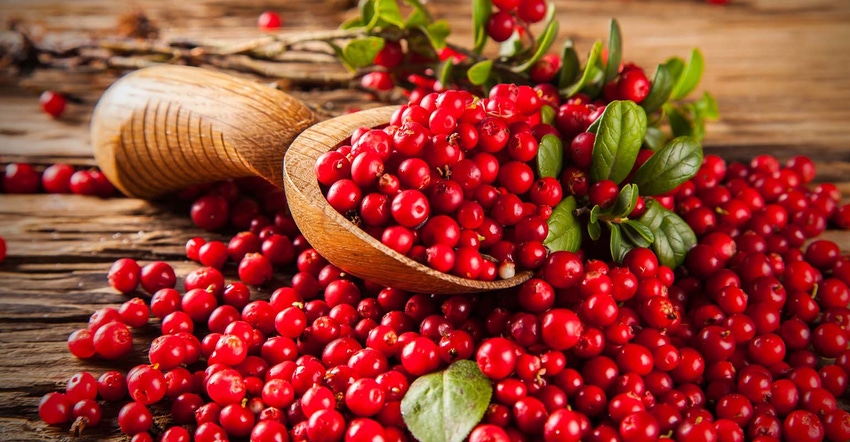
by Jeff Wilson
Cranberries might be a staple on Thanksgiving tables, but a glut of U.S. supplies has gotten so large that fruit could be headed to the compost pile.
Just as demand is hitting its seasonal peak, American processors are anxiously awaiting government approval that would allow them to turn excess fruit into fertilizer. The program would be the first of its kind for cranberries.
Supplies have piled up amid bountiful U.S. harvests and a surge in imports. Inventories were large enough to top consumption before farmers even started gathering this year’s crop in September. The overhang prompted growers and processors to vote in favor of the disposal program at a biannual meeting of the Cranberry Marketing Committee in August. The U.S. Department of Agriculture could rubber-stamp the proposal as early as this week.
“The order will allow the industry to get back into supply and demand balance,” said Kellyanne Dignan, the director of global cooperative communications at Ocean Spray Cranberries Inc., the largest U.S. producer and processor, and a name that’s become almost synonymous with the fruit.
Holiday Icon
The humble cranberry is iconic at this time of year as it pops up in everything from traditional relishes to Christmas cookies and cocktails. About 20% of annual sales of the fresh and processed fruit occurs during the week of Thanksgiving, celebrated on Nov. 23 this year. But becoming a celebrity of the fruit world hasn’t been enough to reverse the slowing pace of demand growth, leading the industry to take desperate measures to keep prices from collapsing.
Under the proposed initiative, fruit processors and exporters would be responsible for supply disposal. Some can be donated or used for research, but the lion’s share will likely end up as compost. The cranberry committee has also recommended that growers reduce next year’s production, leaving it 25% below average sales of the past six years, according to Michelle Hogan, executive director of the Wareham, Massachusetts-based group. The plan for next season is similar to a crop-reduction method last used in 2000 and 2001.
“We are producing a lot more than we are selling” Hogan said.
The cranberry is one of many agricultural products that are plagued by gluts, which has kept global food inflation in check. World grain stockpiles are ballooning and American meat production is at record levels. All the excess supply will help make this year’s U.S. Thanksgiving dinner the cheapest since 2013.
The disposal program would help to reverse the growth of excess supply while the industry works to increase demand in domestic and international markets, said Tom Lochner, executive director of the Wisconsin State Cranberry Growers Association. About 5 percent of the crop is sold as fresh fruit, with the rest stored and sold frozen, dried or processed into juices and sauces.
If the USDA approves the program, any handler that uses more than 125,000 barrels would be required to dispose of 15% of their supplies gathered from this year’s crop, Hogan of the Cranberry Marketing Committee said. A barrel weighs 100 pounds, or 45 kilograms.
U.S. Crop
A bout of bad weather could also help to ease the fruit glut. American production is projected to fall 6% this year to 5.6 million barrels after some adverse growing conditions, the government estimates.
Cranberries are native to North America with about 75% of global production grown in the U.S. Wisconsin accounts for more than half the domestic harvest.
Fawn Gottschalk’s family’s 230 acres of marsh beds in Wisconsin Rapids, Wisconsin, will produce about 7% less this year after a cold start to the growing season, some heat near blooming in July and too much rain in August curbed yields for the perennial crop. The farm her grandfather started in 1940 had better yields than expected as freezing weather this fall came in a little later than normal.
Still, ample inventories mean prices are likely to fall to 30 cents to 35 cents a pound this year from about 38 cents last year and 40 cents in 2015, Gottschalk said.
“We are approaching break-even and some growers are below break-even,” Gottschalk said. “We are still OK, but we need to develop new markets and increase year-round consumption.”
To contact the reporter on this story: Jeff Wilson in Chicago at [email protected]
To contact the editors responsible for this story: Simon Casey at [email protected]
Millie Munshi, Patrick McKiernan
© 2017 Bloomberg L.P
About the Author(s)
You May Also Like




